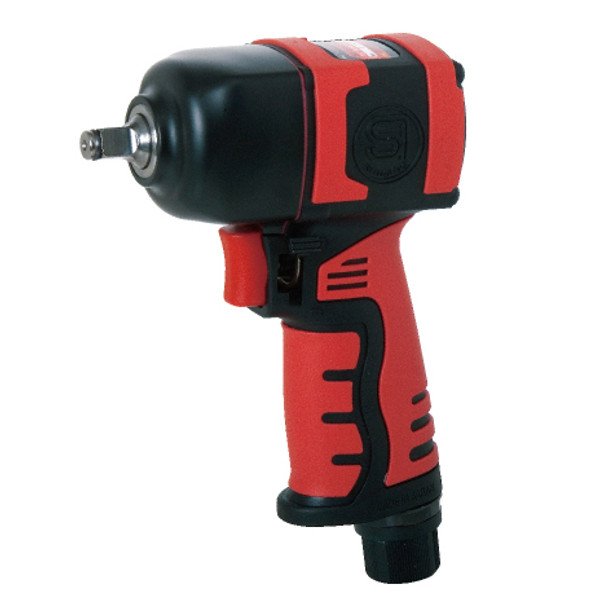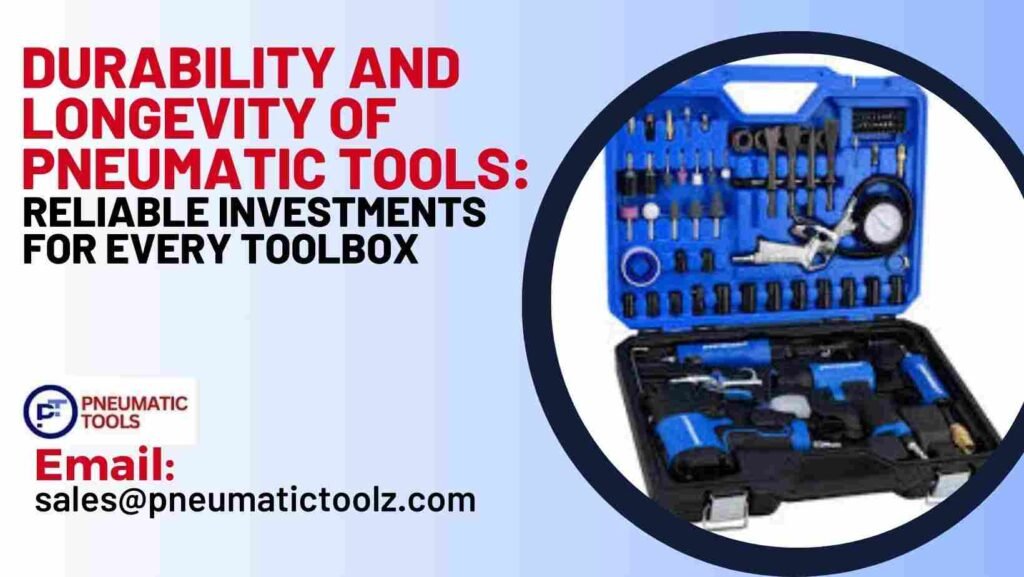- The durability of pneumatic tools is underpinned by their simple yet effective design, high-quality materials, and construction that resists wear and tear.
- This makes them an ideal choice for professionals who need tools that not only perform well but also withstand harsh operational conditions over many years.
- By prioritizing maintenance and using tools as recommended, users can maximize the lifespan and efficiency of their pneumatic equipment, ensuring these tools remain valuable assets in their work arsenal.

Introduction
In the realm of power tools, pneumatic tools stand out for their robust build and exceptional longevity. Known for their reliability under rigorous conditions, these tools are favored in industries ranging from automotive repair to heavy construction. This article explores the factors that contribute to the durability and long-lasting performance of pneumatic tools, making them a wise choice for professionals looking for cost-effective and reliable solutions.
The Foundation of Pneumatic Tool Durability
Pneumatic tools, often referred to as air tools, operate on compressed air supplied by an air compressor, a system that inherently provides numerous benefits contributing to their durability:
- Simplified Design: Unlike electric tools that require motors and wiring, pneumatic tools have fewer moving parts. This simplicity reduces the risk of mechanical failure and extends the tool’s lifespan.
- Constant Power Source: Compressed air is a stable and consistent power source. It does not degrade over time like batteries in cordless tools, ensuring that pneumatic tools perform at their peak for longer.
- Reduced Heat Build-up: Pneumatic tools typically generate less heat during operation compared to their electric counterparts. Less heat means less wear and tear on the tool’s internal components, further enhancing their longevity.
Materials and Construction: Built to Last
The durability of pneumatic tools is not just about their operational mechanism; it’s also deeply rooted in the materials and construction techniques used in their manufacturing:
- High-Quality Materials: Manufacturers of durable power tools prioritize the use of high-grade metals such as steel and aluminum for critical components. These materials withstand the demands of heavy use without compromising the tool’s integrity.
- Protective Finishes: To combat the harsh conditions in which these tools often operate, protective finishes such as powder coatings or chrome plating are applied. These finishes prevent rust and reduce wear, maintaining the tool’s functionality and appearance.
- Precision Engineering: The assembly of pneumatic tools involves precision engineering to ensure tight fits and alignments. This accuracy prevents unnecessary strain on any part of the tool, which could otherwise lead to premature wear.
Enhanced by Modern Technology
Technological advancements have also played a significant role in enhancing the durability of pneumatic tools:
- Improved Sealing Technology: Innovations in sealing technology prevent air leaks, a common issue that can reduce a tool’s efficiency and lifespan. Effective seals ensure that the air pressure is maintained, optimizing the tool’s performance.
- Ergonomic Design: Modern pneumatic tools are designed with ergonomics in mind, not only to increase user comfort but also to reduce the strain on the tool during operation. Ergonomic designs help distribute the operational stress more evenly, which can extend the tool’s life.
These foundational aspects highlight why pneumatic tools are considered a reliable and enduring choice for professionals across various trades. Let’s pause here. In the next section, we will delve into specific scenarios showcasing the longevity of pneumatic tools, their maintenance tips, and the economic benefits of integrating these durable tools into your work processes.
Real-World Resilience: Pneumatic Tools in Action
The true test of any tool’s durability comes under the demanding conditions of real-world applications. Pneumatic tools are not just designed to perform; they are built to last through tough conditions, making them indispensable assets in various professional settings.
Industrial and Automotive Applications
In industries where precision and reliability are paramount, pneumatic tools are the go-to choice. Here’s how they stand up to the challenge:
- Heavy-Duty Usage: In automotive repair shops, pneumatic impact wrenches and ratchets must withstand repetitive, high-torque applications. The robust construction of these tools ensures they can deliver consistent performance without breakdown, even under constant use.
- Harsh Environments: On construction sites, pneumatic tools face dust, debris, and variable weather conditions. Thanks to their sturdy construction and minimal electrical components, these tools are less prone to environmental damage compared to their electric counterparts.
Maintenance Practices That Extend Lifespan
To maximize the longevity of pneumatic tools, proper maintenance is crucial. Regular care not only extends the life of these tools but also maintains their efficiency and safety. Key maintenance practices include:
- Regular Lubrication: Oiling the moving parts of a pneumatic tool reduces friction and wear, significantly extending its operational life. Most pneumatic tools require a few drops of oil in the air inlet before each use.
- Timely Repairs: Addressing leaks and other issues promptly can prevent further damage. For instance, replacing a damaged hose or fitting as soon as it’s noticed preserves the tool’s condition and performance.
- Proper Storage: When not in use, pneumatic tools should be stored in a clean, dry environment to prevent rust and corrosion. Tools should also be disconnected from the air supply to relieve pressure and avoid stress on internal components.
Cost-Effectiveness of Durable Pneumatic Tools
Investing in long-lasting air tools brings significant economic benefits. The durability of these tools means fewer replacements and repairs, leading to cost savings over time. Additionally, their reliability translates to less downtime, enhancing productivity in professional settings.
- Reduced Tool Turnover: High-quality pneumatic tools can last for decades with proper care, unlike cheaper or less durable options that might need frequent replacement.
- Enhanced Productivity: Tools that consistently perform as expected reduce the time and labor costs associated with tool failures and inefficient performance.
Next, we will conclude our discussion by summarizing the critical advantages of incorporating durable pneumatic tools into your toolkit, followed by answering some frequently asked questions about these robust tools.
Conclusion: Investing in Pneumatic Tool Durability for Long-Term Benefits
Choosing pneumatic tools for their durability and longevity is more than a practical decision; it’s an investment in reliability and cost-effectiveness. The robust build of these tools ensures they can handle the rigors of heavy use without frequent breakdowns, making them a staple in environments that demand high performance and resilience.
FAQs About Durability and Longevity of Pneumatic Tools
1. What makes pneumatic tools more durable than their electric counterparts?
Pneumatic tools have fewer moving parts and do not rely on electric motors, which reduces their susceptibility to overheating and electrical failures. Their design allows for simpler maintenance and more robust operation in demanding conditions.
2. How can I tell if a pneumatic tool is built to last?
Look for tools made from high-quality materials such as reinforced steel or aluminum, check for reputable brands known for durability, and consider tools with positive reviews regarding their longevity and reliability.
3. Are there specific maintenance tasks for different types of pneumatic tools?
Yes, different tools may require specific maintenance tasks, but common practices include regular lubrication, moisture removal from compressors, and checking for air leaks. Always consult the tool’s manual for detailed maintenance guidelines.
4. Can regular cleaning extend the life of pneumatic tools?
Absolutely. Keeping tools clean prevents the build-up of dust and debris, which can clog the tool’s internal mechanisms and lead to premature wear.
5. What is the best way to store pneumatic tools when not in use?
Store pneumatic tools in a clean, dry place away from extreme temperatures. Disconnect them from air supply lines to avoid stress on components and cover them to protect against dust.
Related Article
Exploring the Pros and Cons of Air Tools in Your Workshop
Why Quality Matters: Investing in Premium Hand and Air Tools
7 Best Pneumatic air tools Brands and manufacturers in 2024
Call to Action
Are you ready to enhance your toolkit with durable, long-lasting pneumatic tools? Visit Pneumatic Tools and Accessories to explore our vast selection of sturdy construction tools designed for professional use. Whether you’re upgrading your workshop or equipping a large-scale operation, we have the reliable tools you need. For more information or assistance with selecting the right tools, contact us at sales@pneumatictoolz.com today. Equip your projects with the best in the industry and experience the difference that quality and durability can make.
Contact us for the availability of pneumatic tools in your location

